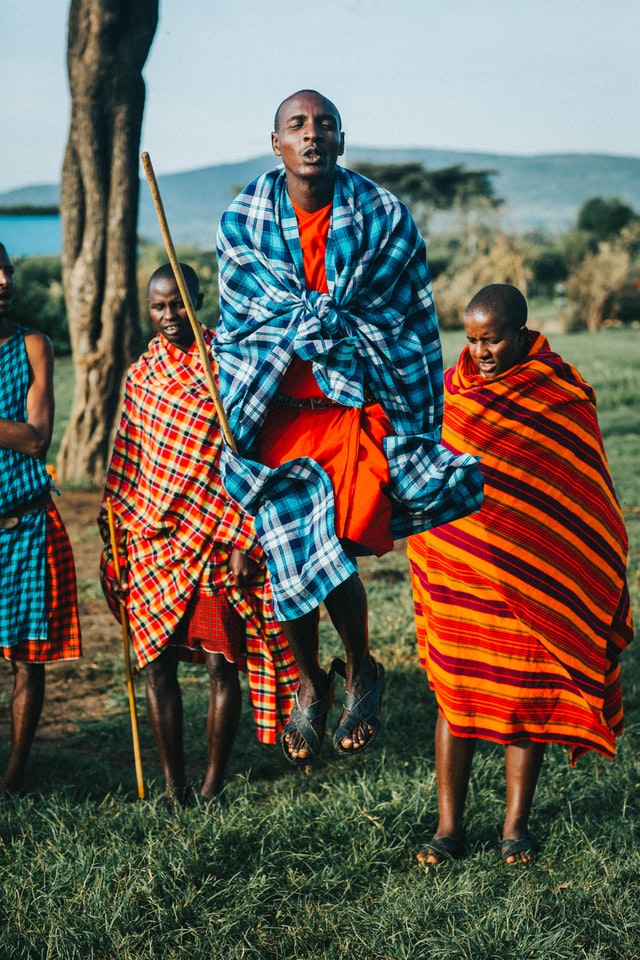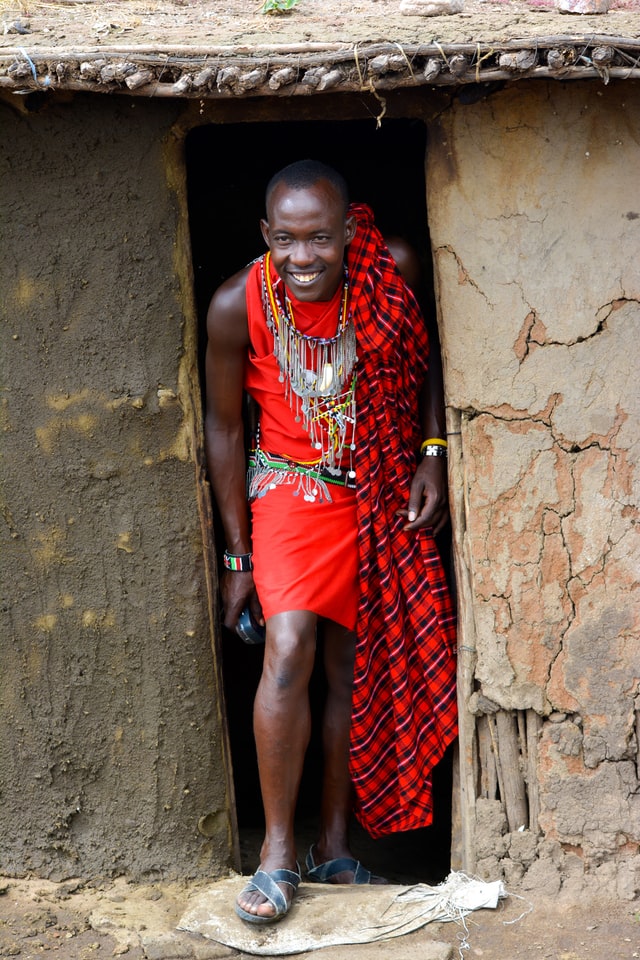The Maasai Tribe in Kenya’ History, Culture and Clothings

The Maasai tribe in Kenya, are a Nilotic ethnic gathering. They communicate in the Maa language connected with the Dinka, Kalenjin, and Nuer dialects.
The Maasai people live in the African Great Lakes region and emerge through South Sudan.
History of Maasai Tribe in Kenya
In the late seventeenth to the mid eighteenth century, they maasai tribe began relocating south.
They setteled in their current country between Southern Kenya and Northern Tanzania.
This relocation brought about the Maasai being the southernmost speaker in the Nilotic.
A portion of different tribes that settle in the locale have been displaced.
Their primary occupation were cow raising, however the Maasai were additionally prestigious hunters and guerrillas for quite a long time.
They utilized shields and spears, however were generally feared for trowing orinka (clubs) which could be masterfully thrown from up to 70 speeds (roughly 100 meters).
By the mid-nineteenth centuary, Maasai occupied one of the biggest region, covering practically the entire of the present Kenya and a big part of Tanzania.
The darkest time throughout the entire existence of Maasai individuals was somewhere in the range of 1883 and 1902.
Also Read: African Safari in Kenya Nairobi; The 5 Best Safari Parks in Kenya to Explore
The Maasai Tribe in Kenya and Tanzania’ Culture

In the Maa language it is known as emutai, and that means to wipee out.
Up to 60 percent of Maasai individuals people were said to have died during this time of smallpox.
An animal diease known as rinderpest killed practically all their animals.
The Maasai lands and territory in Kenya, were reduced from the 1904 to 1911 Treaty.
At the point when the English dispatched the land into public parks.
They changed over huge segments of the Maasai lands and restricted it to the present Narok and Kajiado areas.
Maasai additionally needed to leave their prolific grounds from the Kilimanjaro and Meru Mountains during the 1940s.
More lands were claimed to lay out public parks and natural life like Maasai Mara, Samburu, Ngorongoro, Amboseli, Nairobi Public Park, Serengeti, Nakuru Lake, Manyara and Tarangire.
The Public authority likewise started to push the Maasai to surrender their customary semi-traveling group way of life for a more stationary way of life and cultivating purposes.
Until this point, the Maasai populace has endured goverment pressure to stay in durable homes.
They move away from metropolitan regions and keep on carrying on with unaltered ways of life for quite a long time.
The Maasai Clan in Kenya and Tanzania’ Culture
The Maasai culture is mostly male centric with a senior chamber directing the town’s everyday running and controlling issues as per oral regulation.
Herding of dairy cattle is still the Maasai people’s fundamental activity, and domesticated animals are vital to their way of life. Maasai customarily utilizes raw meat, raw blood, and milk as the primary food.
The quantity of kids and domesticated animals you have measures riches: A man with numerous youngsters is viewed as poor but a man with alot of cattle is viewded as rich.
The warrior caste, known as il-murran in Maa, is one more significant piece of Maasai culture.
Young boys ranging between the ages of 12 and 25, are chosen as a new group of soldiers and are initiated every 15 years.
These men are strictly formed and culminate in a series of rites of initiation, the main one being circumcision. It is done with traditional tools without anesthesia:
The capacity to resist pain is essential for the transition to the manhood of young warrior
Afterward, they are called Moran and shipped off to live in a town called (manyatta)
In their particular dark garments and white facial imprints you presumably will see numerous Moran along the courses of Kenya and Tanzania that offer cash to put on traveler pictures.
Believe System
The Maasai Clan in Kenya and Tanzania practice a monotheistic conviction framework.
The Godhead is known as Engai and has a double nature — both kind and wrathful.
A laibon, a sort of minister and Shaman, generally remembered for mending, divination, and prediction is the most important person in the Maasai religion.
They likewise play a political part in the present society, as most laibon have a place with the elderly folks’ gathering.
The towns in Maasai will quite often be diverse. Frequently men have a few ladies, every one of them having their own home.
At the point when a lady weds, she weds her husband and his entire age group.
A man was customarily expected to give his wife to his male guest. The custom has presently disappears.
Maasai ladies’ essential job is to have kids who can raise ox-like animals when they can walk.
Youngsters are supposed to shepherd the steers of the family (which gives their three fundamental food sources: meat, milk and blood).
They additionally assist their moms with gathering firewood, cook, and do the vast majority of the other homegrown obligations.
Children are not named until they are three months old due to high baby mortality rate.
For the Masai people, the dead are left in the fields for scavengers.
Burials are only helg for great chiefs and leaders becuas it is belived that burial is harmful to the soil.
Also Read: The 5 Best Safari Parks in Kenya to Explore
Maasai Popular Clothings

The shùkà, a sheet of wear folded over the body, is one of the most recognizable pieces of the Maasai’s clothing.
Maasai clothing differs in variety relying upon age and sex. Young fellows will don dark for two or three months after their circumcision.
Senior men for the most part have red wraparounds, while ladies normally decide to wear bits of fabric checked or stripped.
Beads
Maasai beadwork is well known for its intricacy and Maasai ladies express their position in the public arena.
Before the exchange with Europeans began, regular materials like earth, shells, and ivory were utilized.
They were then supplanted with bright glass dots, which empower definite variety examples and beadwork.
White symbolizes harmony, blue is water, and red is fighters and boldness images. Bloom is the image of harmony.
During section customs like weddings and circumcision, the vast majority of the Maasai people shave their head.
The main individuals allowed to develop their hair are Maasai fighters who generally use it in meager tissues.
They typically wear beaded earrings and more modest piercing on the highest point of the ear on the lengthy studs.
They additionally utilize stone, wood, and issue that remains to design their earpiece.

Reference: siyabona.com, zegrahm.com





